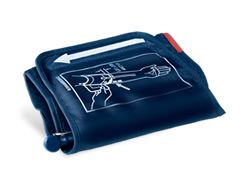
Exercise that helps reduce blood pressure
Do you suffer from high blood pressure? All it takes is a little movement and light physical activity to keep it under control, though some sports, such as weightlifting, must be carried out with caution. Here are some things to keep in mind when choosing a form of exercise if you have high blood pressure.
Exercise reduces cardiovascular risk
Here's a statistic to start with: if you're at risk of hypertension, you should know that physical exercise which stimulates the cardiovascular system makes you 35% less likely to develop full-blown arterial hypertension.
3 sessions a week to prevent high blood pressure
If your exercise programme is to be effective against hypertension, you should make space for at least 3 sessions a week. Schedule these “sport meetings” on your personal calendar.
Each session should last at least half an hour
Bear in mind that each session should last at least 30 minutes. Always begin with about 10 minutes' stretching to warm up. One piece of advice? Allow a day between sessions to recover your energy and get rid of any lactic acid that has accumulated in your muscles.
The best activities for your high blood pressure
If you suffer from hypertension, the best forms of exercise are, without a shadow of doubt, those that combine resistance with aerobic metabolism, moderate increases in heart rate and blood pressure, and competitive effort. Some examples? Cycling, walking and running on level ground, hill-walking, cross-country skiing, swimming, golf, skating, canoeing, bowls, fishing, and shooting. Avoid any activities that could increase your blood pressure too much, such as heavy weightlifting and bodybuilding.
Check your heart rate when you exercise
Remember that the effort you make during your session should never exceed 50% of the maximum achievable heart rate. Calculate the maximum rate using the following formula: 220 minus your age.
Cool down after exercise
At the end of each session, spend about 10 minutes of your time recovering and relaxing your muscles. This will help to get your heart rate back to normal without losing oxygenation.











